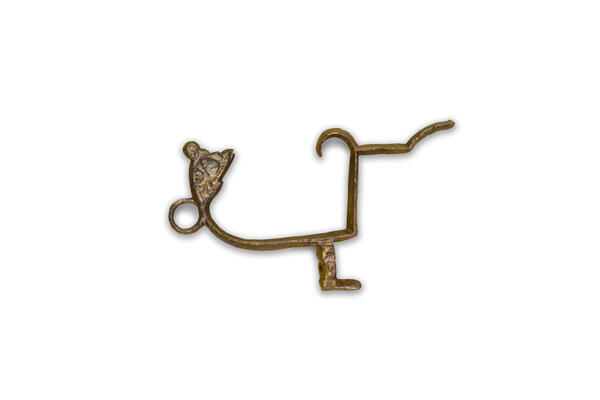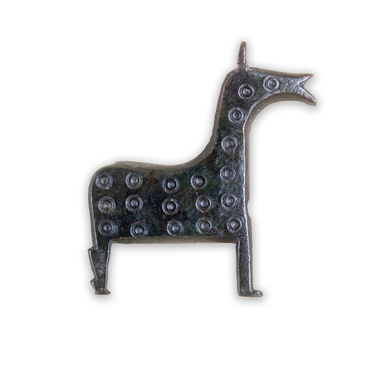Сorona lucis (in Russian ‘choros’) is a type of a church chandelier. Its history began in the first centuries AD. In early Christian temples in Greece, parishioners gathered for prayer in the center of the hall. This place was called ‘chorus’ after the first word of the prayer ‘Let us pray together …’ Chorus was located inside the middle dome. Lighted candles were placed on the vaults on special ledges. Their number varied; seven candles meant the number of gifts from the Holy Spirit, and twelve indicated the number of the apostles. The vault symbolized the sky, and the candles symbolized the stars.
Over time, the candles on the vaults were replaced with a chandelier with many candles hanging under the dome, which was also called a chorus. It was an attribute of any Orthodox church.
In Rus, masters began to make the Сoronae lucis in Kyiv as far back as the 12th century. A wooden or metal wheel was horizontally suspended by a chain from the ceiling. Light fixtures — oil lamps or candles — were placed on the wheel. In some churches, the chandelier was made in the form of a semicircular bowl with oil lamps inside.
Over the years, the shape of the chandeliers changed. The corona lucis began to be decorated with various ornaments and symbols. Plants, dragons, angels, mythical creatures served as inspiration for the artists. All these images had their own religious meaning, symbolized the struggle between Good and Evil. If more than 12 candles were put in the chorus, it was called polycadilo (from the Greek word meaning ‘many candles’). Later, the word changed: the first part of it became close to the word ‘panikhida”(funeral or commemoration service), and the second — to the word “kadilo” (thurible). The term “panikadilo” was more often used in the Russian Orthodox Church.
Nowadays, the chorus and the panikadilo are different parts of the church chandelier. One-tiered and multi-tiered part in the form of a circle with candles is the chorus while the lamp in the form of a tree, which is usually located inside the chorus, is the panikadilo.
The tree structure of the panikadilo symbolizes the tree of life. In addition to lamps, there are ornaments and icons on church chandeliers. All main parts are cast separately, and then the structure is assembled in strict compliance with the canons. In the temples, we can see both the chorus and the panikadilo separately and together in the form of a complex central chandelier. Modern lighting fixtures are made of gilded bronze or anodized aluminum with a special oxide film.
Over time, the candles on the vaults were replaced with a chandelier with many candles hanging under the dome, which was also called a chorus. It was an attribute of any Orthodox church.
In Rus, masters began to make the Сoronae lucis in Kyiv as far back as the 12th century. A wooden or metal wheel was horizontally suspended by a chain from the ceiling. Light fixtures — oil lamps or candles — were placed on the wheel. In some churches, the chandelier was made in the form of a semicircular bowl with oil lamps inside.
Over the years, the shape of the chandeliers changed. The corona lucis began to be decorated with various ornaments and symbols. Plants, dragons, angels, mythical creatures served as inspiration for the artists. All these images had their own religious meaning, symbolized the struggle between Good and Evil. If more than 12 candles were put in the chorus, it was called polycadilo (from the Greek word meaning ‘many candles’). Later, the word changed: the first part of it became close to the word ‘panikhida”(funeral or commemoration service), and the second — to the word “kadilo” (thurible). The term “panikadilo” was more often used in the Russian Orthodox Church.
Nowadays, the chorus and the panikadilo are different parts of the church chandelier. One-tiered and multi-tiered part in the form of a circle with candles is the chorus while the lamp in the form of a tree, which is usually located inside the chorus, is the panikadilo.
The tree structure of the panikadilo symbolizes the tree of life. In addition to lamps, there are ornaments and icons on church chandeliers. All main parts are cast separately, and then the structure is assembled in strict compliance with the canons. In the temples, we can see both the chorus and the panikadilo separately and together in the form of a complex central chandelier. Modern lighting fixtures are made of gilded bronze or anodized aluminum with a special oxide film.



